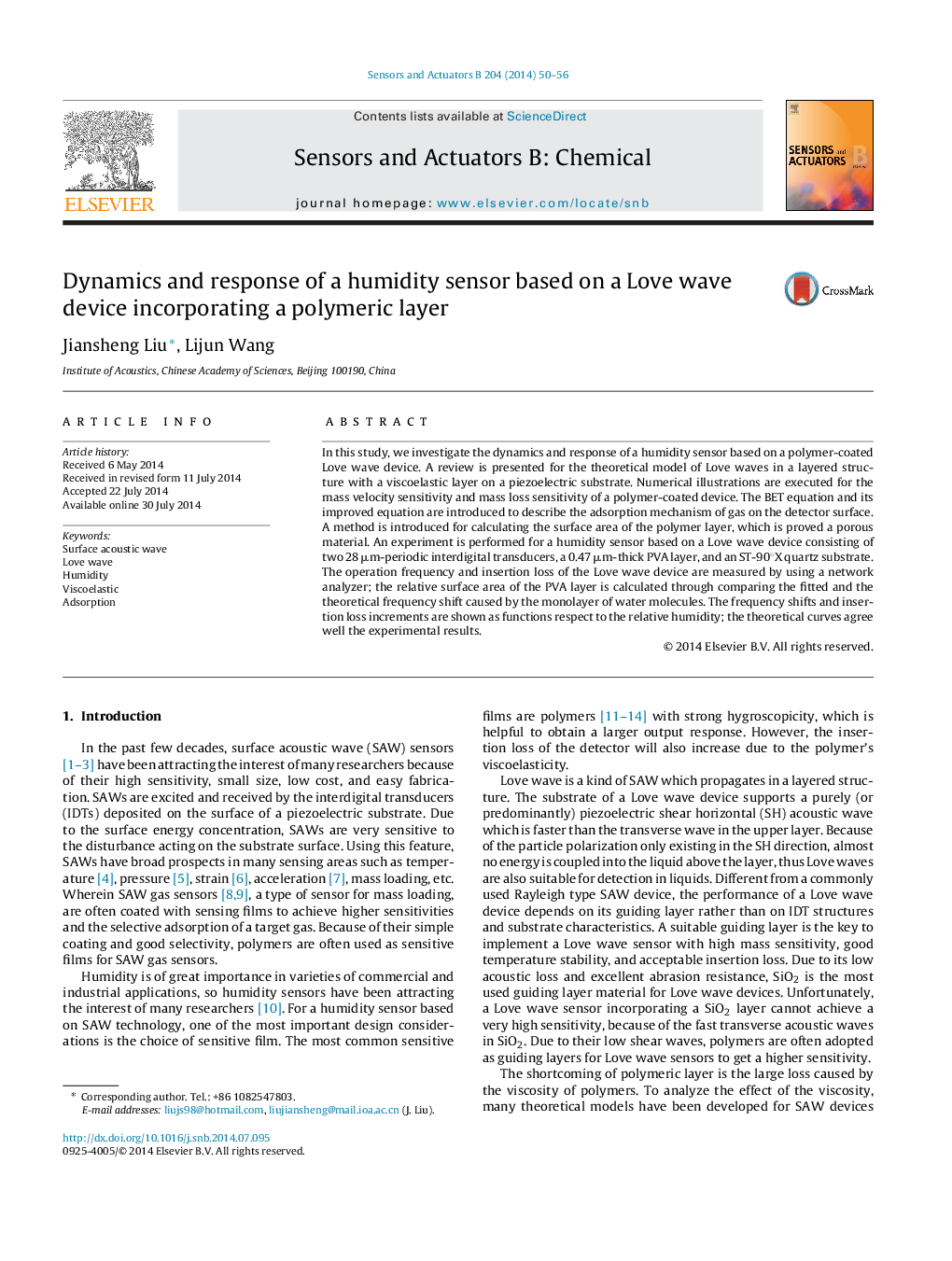| Article ID | Journal | Published Year | Pages | File Type |
|---|---|---|---|---|
| 741953 | Sensors and Actuators B: Chemical | 2014 | 7 Pages |
In this study, we investigate the dynamics and response of a humidity sensor based on a polymer-coated Love wave device. A review is presented for the theoretical model of Love waves in a layered structure with a viscoelastic layer on a piezoelectric substrate. Numerical illustrations are executed for the mass velocity sensitivity and mass loss sensitivity of a polymer-coated device. The BET equation and its improved equation are introduced to describe the adsorption mechanism of gas on the detector surface. A method is introduced for calculating the surface area of the polymer layer, which is proved a porous material. An experiment is performed for a humidity sensor based on a Love wave device consisting of two 28 μm-periodic interdigital transducers, a 0.47 μm-thick PVA layer, and an ST-90°X quartz substrate. The operation frequency and insertion loss of the Love wave device are measured by using a network analyzer; the relative surface area of the PVA layer is calculated through comparing the fitted and the theoretical frequency shift caused by the monolayer of water molecules. The frequency shifts and insertion loss increments are shown as functions respect to the relative humidity; the theoretical curves agree well the experimental results.
